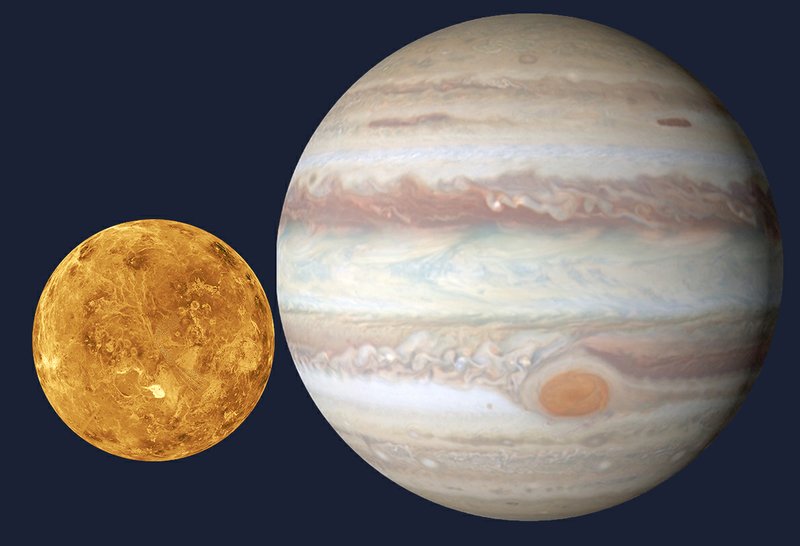WESTSIDE -- Close encounters and near misses are commonplace on highways in northwest Arkansas and northeast Oklahoma. They happen everyday. Cars and trucks travelling near 60 miles per hour meet on a two-lane highway with only a foot or two, and sometimes only inches, between them. We see them often. But another kind of close encounter and near miss could be seen by all on Saturday night in the sky looking west over Oklahoma. Venus and Jupiter almost collided.
It was hard to watch, a fellow could see them on a collision course on Friday night and on Saturday evening, just as the sun set in the western sky, they almost hit. According to local astronomical measurements, they came so close it is hard to see how they didn't collide and light up the western sky with a fireball like we've never seen before; but, fortunately for all of us, they missed by a hair and began to move apart again.
And, if they had hit, what a collision it would have been! Venus was traveling at more than 78,000 miles per hour, according to California Institute of Technology in Pasadena, Calif. CalTech also reported that Jupiter was cruising along through the evening sky at 29,236 miles per hour when the near miss occurred. Had they hit, there would have been planetary debris all over the solar system and those folks out west of us, over in Oklahoma, could have suffered greatly.
According to NASA, the near miss is called an appulse.
"Venus and Jupiter will come so close together Saturday evening that they will create a special kind of conjunction called an appulse, when two objects approach each other so closely that they reach (or very nearly reach) the absolute minimum separation," the NASA website warned.
Webster's dictionary defines appulse as "a striking against," and they certainly came close to appulsing one another.
"I was watching Venus and Jupiter just after the sun went down over there in Oklahoma," said Kooly Skytalker, of the city of Bloomfield (just west of Gentry). "Them two planets got so close I was just sure they were going to sideswipe each other and have a horrific crash," he said.
One young mother who was driving home from work to her family in Oklahoma, stopped in Gentry and had a look of horror on her face.
"I was just driving home from work and, as I looked up toward Oklahoma, I saw it -- Jupiter and Venus were about to collide there almost over my house," said Connie Littlechick. "I was afraid a colliding of the planets might set fire to Oklahoma and my house," she said. She was relieved to learn it was only a near miss and not a stellar-type collision.
Scientists' arguments were convoluted on the matter, saying the two planets came within a half a degree of one another in one sentence and then denying the whole thing by saying the planets were actually 416 million miles apart at the time of the near collision.
One thing scientists we talked to did agree upon is that the two planets are on another crash course in 2065. While we find the very thought of another appulse repulsive, we will keep our eye on it and issue a warning to our readers in Oklahoma if they might be affected.
S.A. Tired covers fictitious news from an unrealistic perspective for the Eagle Observer. He may be contacted by email at [email protected]. News and views in Spinning the News are claimed by no one else but the author.
Editorial on 08/31/2016
